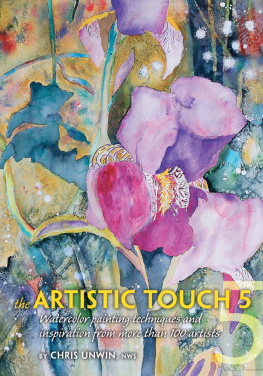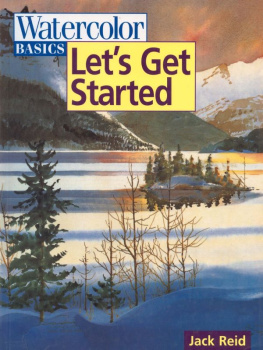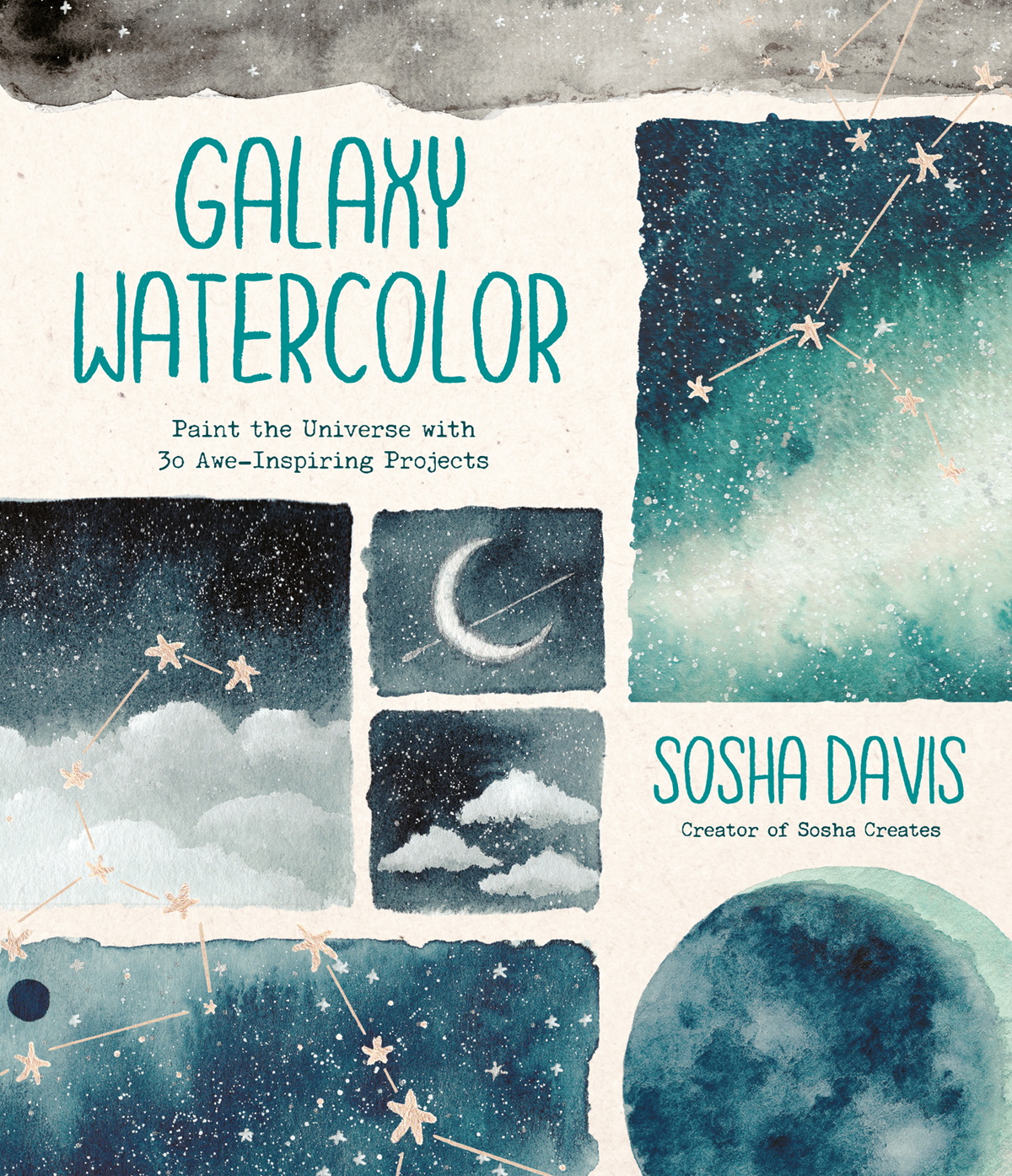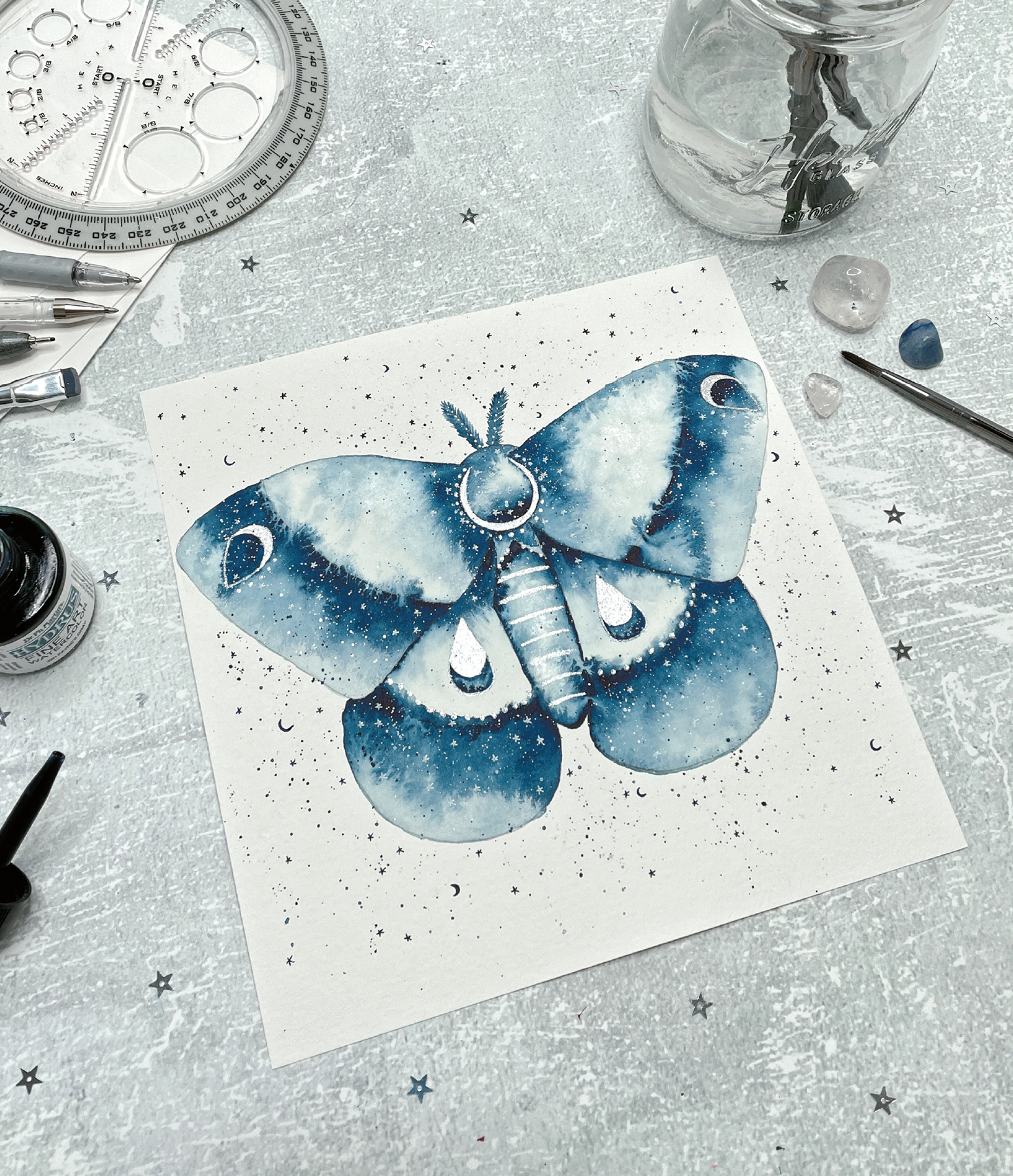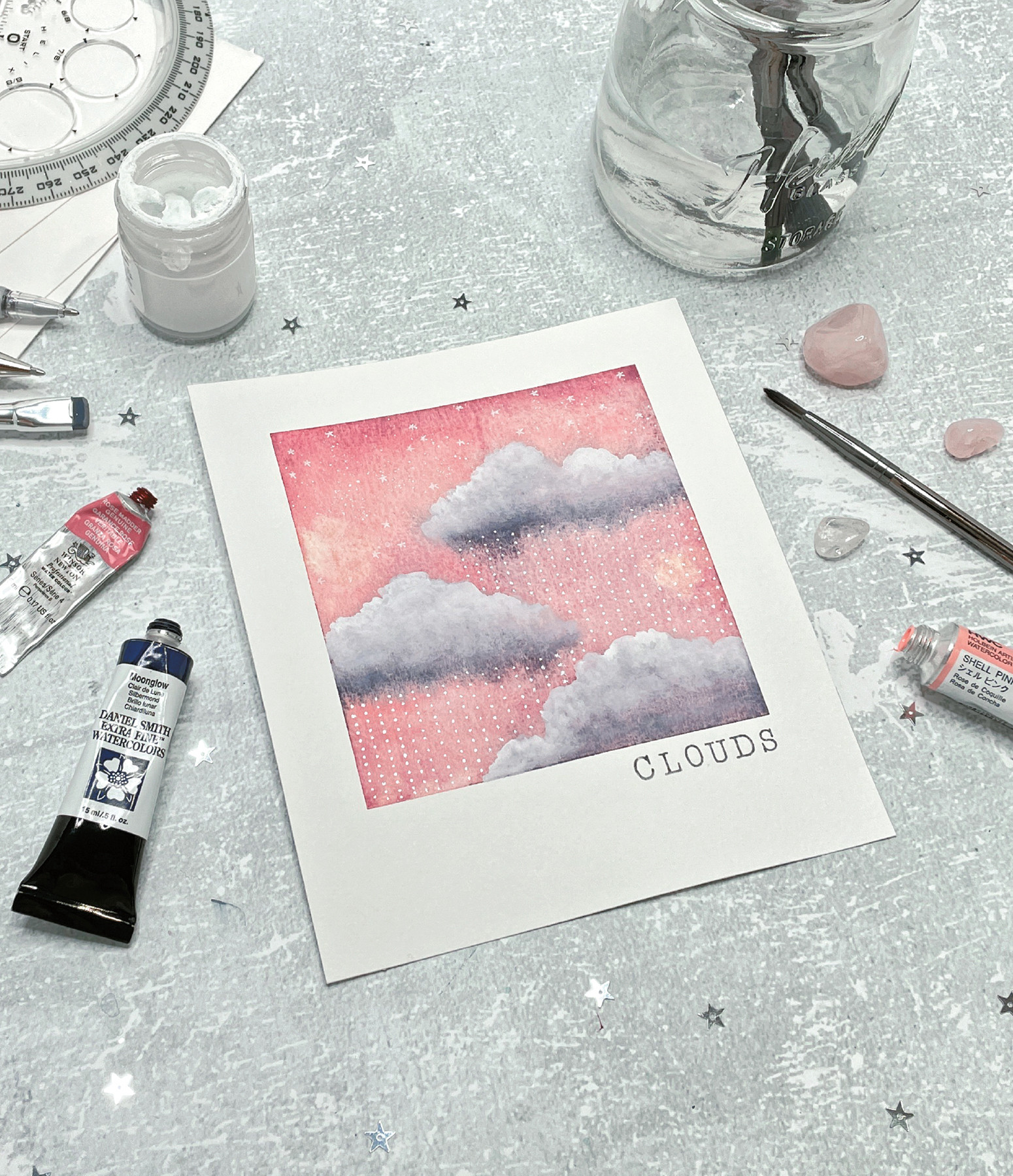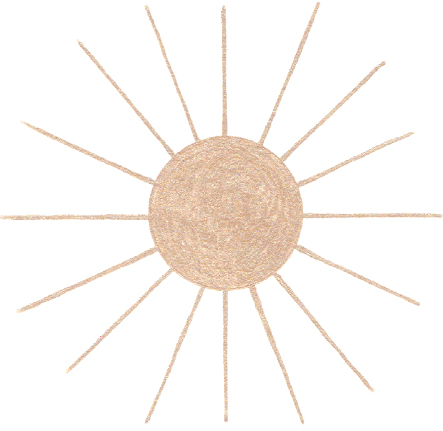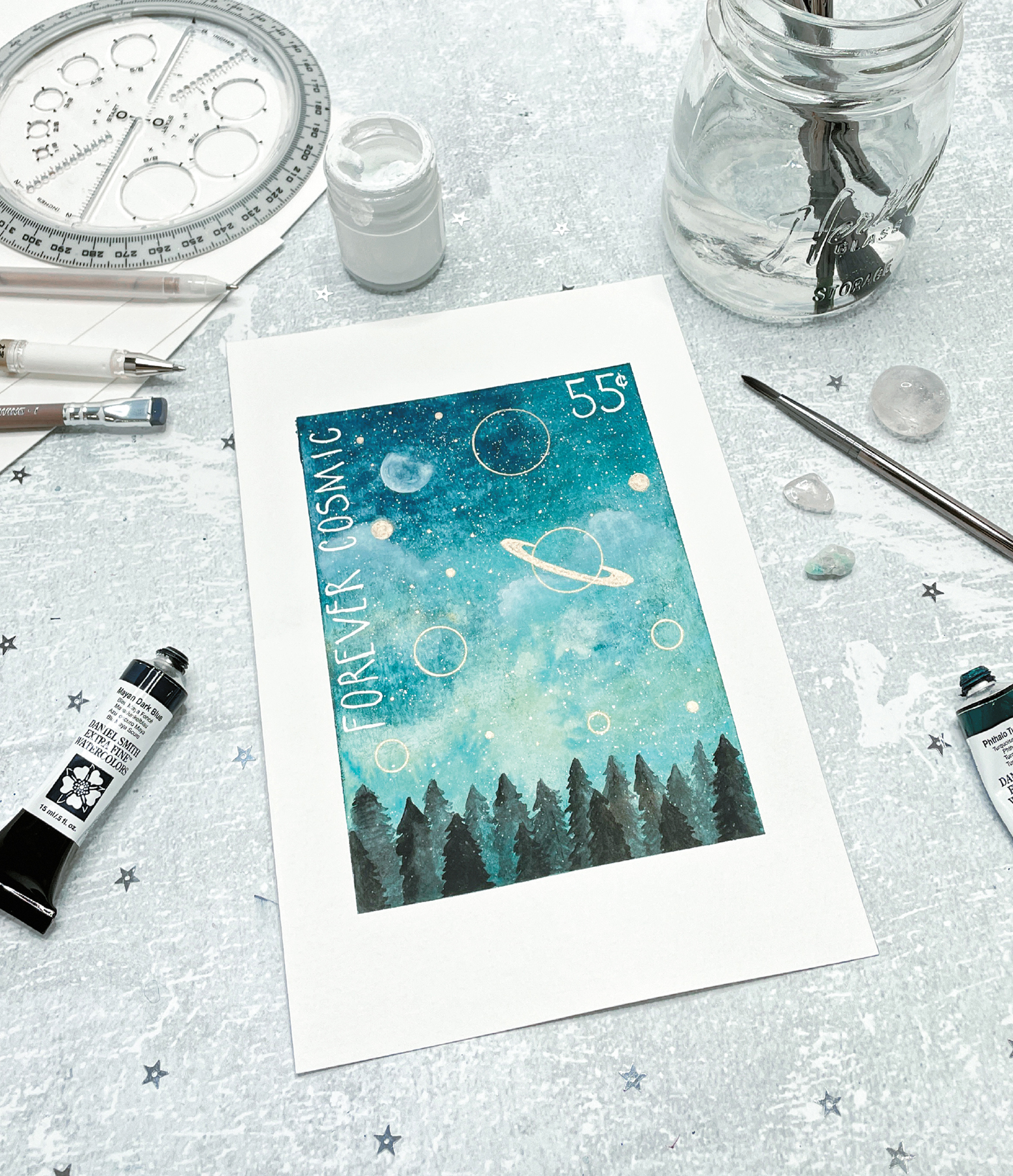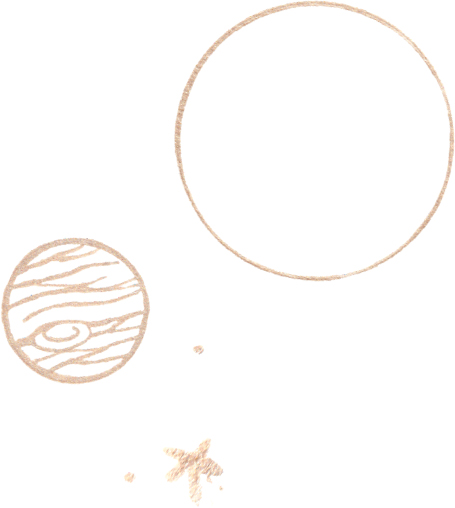Contents
Guide
GALAXY WATERCOLOR
Paint the Universe with 30 Awe-Inspiring Projects
SOSHA DAVIS
creator of sosha creates

The author and publisher have provided this e-book to you for your personal use only. You may not make this e-book publicly available in any way. Copyright infringement is against the law. If you believe the copy of this e-book you are reading infringes on the authors copyright, please notify the publisher at: http://us.macmillanusa.com/piracy.
It has been said that astronomy is a humbling and character-building experience. There is perhaps no better demonstration of the folly of human conceits than this distant image of our tiny world. To me, it underscores our responsibility to deal more kindly with one another, and to preserve and cherish the pale blue dot, the only home weve ever known.
Carl Sagan, Pale Blue Dot: A Vision of the Human Future in Space
This book is dedicated to my children, Jaxon and Jori, for bringing me closer to the meaning of life and opening my eyes to the natural universe we exist in.
Hello, friend! Thank you for choosing my book. Im excited to share with you how I create some of my dreamy cosmic art. Im a classic Pisces sun signartistic, highly imaginative and a big dreamerand Ive loved to paint ever since I was a child. Pisces is one of the water element signs of the zodiac, so perhaps its only natural that I became drawn to watercolors in college. The process of painting with them and how they swirl around in the water and on the paper has always been mesmerizing to me. It is a very dreamy, relaxing medium.
Watercolors are not only a significant part of my art but also how I connect to the world around me. As Ive gotten older, Ive felt a profound need to connect to nature and the universe. I look to the cosmos to explain the existence of life, and this has led me on a spiritual journey that manifests itself in my art. I try to create something every day that reflects my love of the cosmos. Its my personal process of exploration, meditation, therapy and creativity.
My artistic style reflects exactly what I dream up in my imagination! It takes time to develop an artistic style, and your style can change as life ebbs and flows. The most significant thing Ive learned from finding my style is that you have to paint what you feel and feel what you paint. Forget the end result; its about the process and being with your art in the moment. When you let go of the need to control the end result, especially with watercolor, your art will showcase how beautiful that process can be.
In this book I provide my secrets to reimagining the cosmos with watercolors. You will learn some basic watercolor techniques that will help you create a variety of foundational backgrounds, and Ill also give you my paint-mixing formulas for the colors I use most often in my paintings. Ill show you step by step how to replicate scenes of the moon, dreamy skies with clouds, planets with a twist and surreal symbols in my airy, ethereal style.
My wish is that you find this book helpful, soothing and dreamy. I also hope that it inspires you to create beyond what Ive shown you and helps you find your own creative path.

SUPPLIES
Paper
There are several different types and brands of watercolor papers that can be used for the projects in this book. Hot press, cold press and mixed-media papers are all suitable for watercolor. Hot press paper is smooth without any tooth or texture to it, which is good for watercolor applications that use little water. Cold press paper has texture and holds a lot of water for a longer period of time. Mixed-media paper is similar to a thicker sketching or drawing paper and works well for just about any application, wet or dry.
For almost all of the projects in this book, I used Canson, Winsor & Newton, and Fluid cold press, 140lb (300gsm) watercolor blocks in varying sizes. For one project I also used my handmade journal of mixed-media paper that I folded in half.
Several of these projects are suitable to paint in a journal, and you can easily make your own with about five large sheets of mixed-media paper stapled together in the middle. If you buy a journal to use, make sure it has a heavy paper inside, like a mixed-media or thick watercolor paper.
Lastly, you will use some sticker paper for one of the projects. You can buy full sheets of sticker paper at most craft stores. It is usually located near the personal cutting machines. If you cannot find any whole sheets of sticker paper, you can always use printer labels. I buy my sticker paper from Amazon in 8 x 11inch (21.5 x 28cm) sheets.
Brushes
Like paper, brushes come in all sorts of styles, brands, shapes, sizes and materials. To some artists, a paintbrush is everything, but some of them have a hefty price tag. I try to stay away from natural brushes that are made with animal hair, but its completely an artist preference. I also stay away from wood-handled brushes because if you leave them in your water dish, over time they start to warp and fall apart. My preferred brushes that I used for all of the projects in this book are from the Zen collection by Royal & Langnickel. I use round brushes in sizes 2, 4, 6 and 8. I also use a medium round wash brush to lay down water or a wash before I add color. To make stars, I use a very tiny size 0 brush.
Watercolor
For me, watercolor has to be just as beautiful as It Is therapeutic. Choosing the right watercolors Is Important because it can really make or break a piece. Color quality is everything in my opinion. The right color can assist you in painting a great piece, whereas some colors will work against you. Student-grade watercolors are pretty inexpensive, but a lot of them are very basic. Professionalgrade watercolors tend to have beautiful gradations of color or bleed beautifully when added to a wash of water.
Many watercolors come in tubes or little pans of dried paint called half pans or full pans. Most colors I use come in tubes, and I hand pour them into half pans. They dry, but adding water will activate the paint. There are also liquid watercolors that work in a similar way on paper as a tubed watercolor. Liquid watercolor is highly pigmented, and a little goes a long way. It spreads beautifully in water, and the colors are very vibrant, for example, the project, which is something very similar to liquid watercolor. It is a permanent ink but acts a lot like a liquid watercolor.

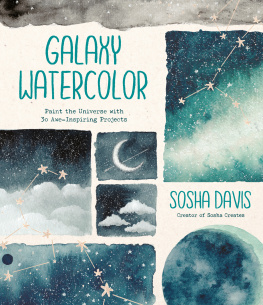
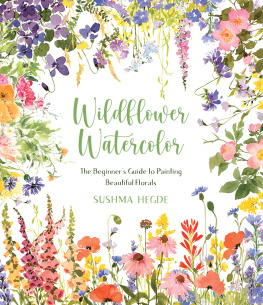
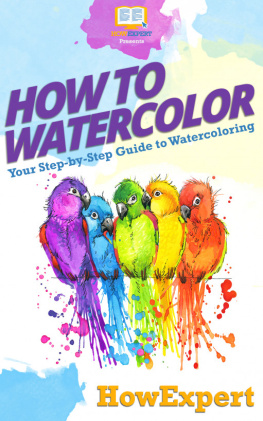

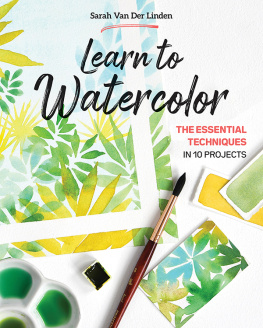
![Anna Koliadych [Анна Колядыч] - 15-Minute Watercolor Masterpieces: Create Frame-Worthy Art in Just a Few Simple Steps](/uploads/posts/book/305450/thumbs/anna-koliadych-a-k.jpg)

